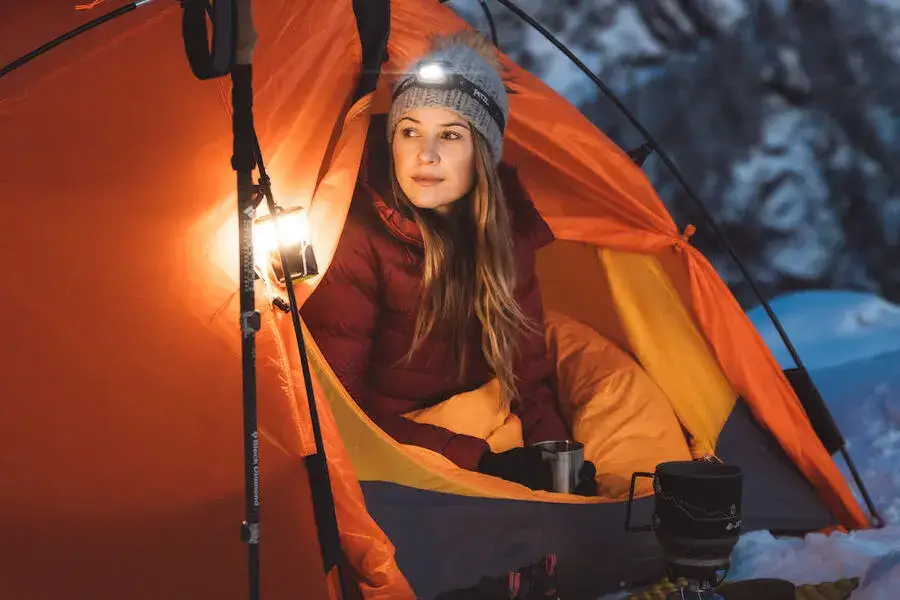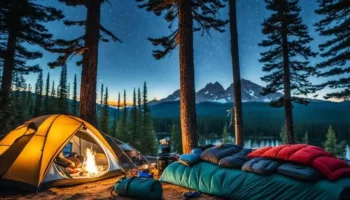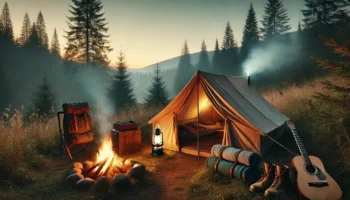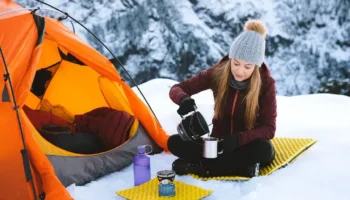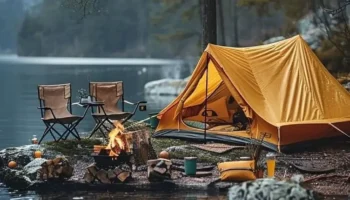Camping is an incredible way to connect with nature, unwind from the stresses of daily life, and enjoy the outdoors. How to start camping? Whether you are drawn to the idea of waking up to the sound of birds, hiking through scenic trails, or relaxing around a campfire, camping offers something for everyone. However, if you have never camped before, it can seem a little daunting. Where do you start? What gear do you need? How do you choose the right campsite? In this guide, we will walk you through the basics, so you can feel confident heading into your first outdoor adventure.
Starting with a simple approach and the right gear can make all the difference in your camping experience. From selecting the best campsite to packing essential items like tents, sleeping bags, and food, camping does not have to be complicated.
Whether you are planning to camp near your car, hike into a remote area, or try a cozy campground, this step-by-step guide will help you get started and enjoy a safe, fun, and memorable camping trip.
Starting camping
How to start camping? Starting camping is an exciting way to enjoy nature, disconnect, and explore the outdoors. Here is a guide on camping tips to help you get started.
1. Choose the right type of camping
- Car camping: You camp near your car, making it easier to bring more gear.
- Tent camping: A traditional camping experience where you set up a tent.
- Backpacking: Hiking to your campsite, usually requiring lightweight gear.
- Glamping: Combines camping with more luxurious amenities (e.g., cabins or tents with beds).
2. Find a suitable campsite
- Campgrounds: Start with a designated campground, which may have amenities like toilets, showers, and fire pits.
- National or state parks: Great for both beginner and experienced campers. Research sites ahead of time and make reservations if needed.
- Dispersed camping: For more experienced campers, this is camping outside of designated campgrounds, usually in remote areas.
3. Essential gear
- Tent: Choose one that’s appropriate for the number of people and weather conditions.
- Sleeping bag and pad: Get a sleeping bag rated for the temperatures you will encounter, and a pad for comfort and insulation.
- Cooking supplies: A portable stove, fuel, cookware, and utensils. You can also opt for campfire cooking if permitted.
- Clothing: Layered clothing for various temperatures, waterproof jacket, hat, and sturdy footwear.
- Headlamp or flashlight: For navigating in the dark.
- Water: Either bring water or a water purification system if you are camping near a natural water source.
- First aid kit: Include bandages, antiseptic, tweezers, and other essentials.
4. Food and cooking
- Plan simple meals like sandwiches, pasta, or instant oatmeal. Bring snacks such as trail mix, energy bars, and fruit.
- Coolers: For car camping, a cooler with ice can store perishables.
- Campfire or stove: If you are allowed to build a campfire, bring firewood. Otherwise, use a camp stove.
5. Know the rules
- Leave no trace: Follow the “Leave No Trace” principles to minimize your environmental impact (pack out trash, minimize campfire impact, etc.).
- Permits and regulations: Some areas require camping permits, and there may be rules about campfires, wildlife, and water use.
- Wildlife safety: Learn about wildlife in the area and how to store food to avoid attracting animals like bears.
6. Prepare for the weather
- Check forecasts: Always check the weather before heading out, and pack accordingly.
- Shelter and warmth: Bring enough layers to stay warm at night, and a rain fly for your tent in case of rain.
7. Test your gear before you go
- Practice setting up your tent in your backyard or a nearby park.
- Test your stove to make sure it’s working.
- Wear your hiking shoes ahead of time to break them in and avoid blisters.
8. Start small
- If you are new to camping, start with an overnight trip close to home. This helps you get comfortable with the process without being too far from civilization.
9. Safety tips
- Navigation tools: Bring a map, compass, or GPS, especially if you arehiking to your campsite.
- Fire safety: Be cautious when using campfires, and make sure they are fully extinguished before you sleep or leave.
- Inform someone: Tell a friend or family member where you are going and when you expect to return.
10. Relax and enjoy!
- Once you are all set up, take time to enjoy your surroundings—hiking, stargazing, or just relaxing by the campfire.
Camping is a fantastic way to explore the outdoors, disconnect from everyday life, and immerse yourself in nature, and getting started is easier than you might think. By choosing the right campsite, packing essential gear, and being prepared for the weather, you will be ready to enjoy your first camping trip with confidence. Remember to start small, follow safety guidelines, and embrace the adventure. With each trip, you will gain more experience, allowing you to tackle bigger adventures and discover new favorite spots in the wilderness. So grab your gear, head outside, and start creating unforgettable camping memories!

